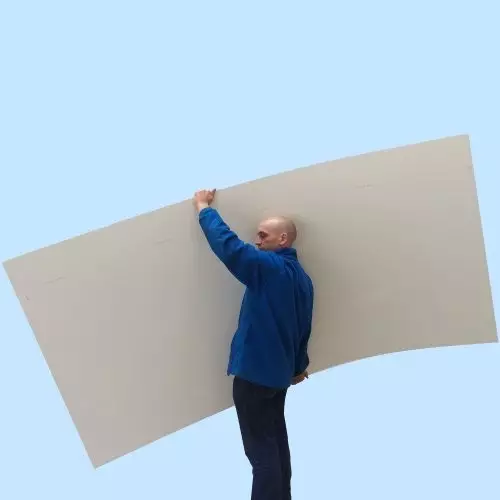Polycarbonate vs. PVC Sheets: Unveiling the Key Differences
When it comes to choosing the right material for various applications, polycarbonate and PVC sheets are two popular options. Both materials offer unique properties and advantages, but understanding the differences between them is crucial for making an informed decision. In this article, we will delve into the dissimilarities between polycarbonate and PVC sheets, providing you with valuable insights to help you choose the most suitable material for your specific needs.
- Composition and Properties:
Polycarbonate sheets are made from a thermoplastic polymer known as polycarbonate, which is derived from bisphenol A (BPA). These sheets are renowned for their exceptional strength, impact resistance, and transparency. Polycarbonate sheets also exhibit excellent heat resistance and can withstand a wide temperature range, making them ideal for applications requiring durability and clarity.
On the other hand, PVC sheets are composed of polyvinyl chloride, a synthetic plastic polymer. PVC sheets are known for their versatility, as they can be rigid or flexible depending on the manufacturing process. They offer good chemical resistance, electrical insulation properties, and are relatively lightweight. PVC sheets are commonly used in construction, signage, and various industrial applications.
- Applications:
Due to their superior impact resistance and transparency, polycarbonate sheets find extensive use in industries such as automotive, aerospace, electronics, and construction. They are commonly employed in manufacturing bulletproof windows, safety goggles, greenhouse panels, and skylights. The ability of polycarbonate sheets to withstand extreme weather conditions and UV radiation makes them a popular choice for outdoor applications.
PVC sheets, on the other hand, are widely used in construction for applications such as wall cladding, roofing, and window frames. Their chemical resistance makes them suitable for use in chemical processing plants and laboratories. PVC sheets are also utilized in the signage industry for creating durable and weather-resistant signs.
- Environmental Impact:
When considering the environmental impact, polycarbonate sheets are generally considered to be more eco-friendly compared to PVC sheets. Polycarbonate is a recyclable material, and its production requires less energy compared to PVC. Additionally, polycarbonate sheets have a longer lifespan, reducing the need for frequent replacements and minimizing waste.
PVC sheets, on the other hand, have a higher environmental impact due to the presence of chlorine in their composition. The production and disposal of PVC sheets can release harmful chemicals, including dioxins, which are known to be hazardous to human health and the environment. However, advancements in PVC manufacturing techniques have led to the development of more sustainable and environmentally friendly options.
Conclusion:
In conclusion, polycarbonate and PVC sheets are distinct materials with unique properties and applications. Polycarbonate sheets offer exceptional strength, impact resistance, and transparency, making them suitable for a wide range of industries. PVC sheets, on the other hand, are versatile, lightweight, and commonly used in construction and signage applications. Understanding the differences between these materials is crucial for selecting the most appropriate option based on your specific requirements.

Post Comment